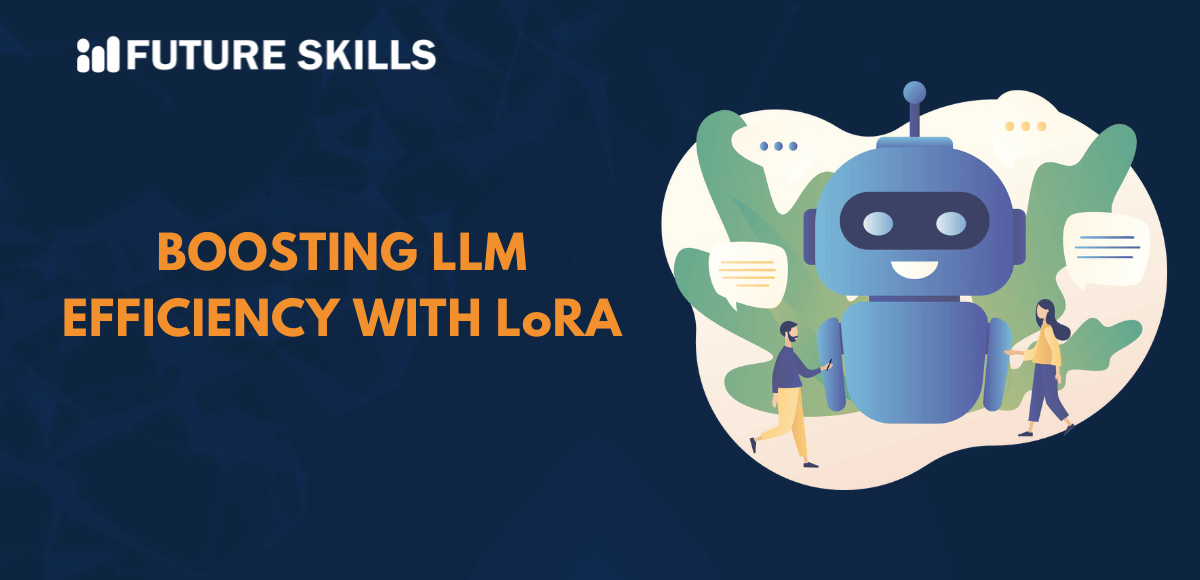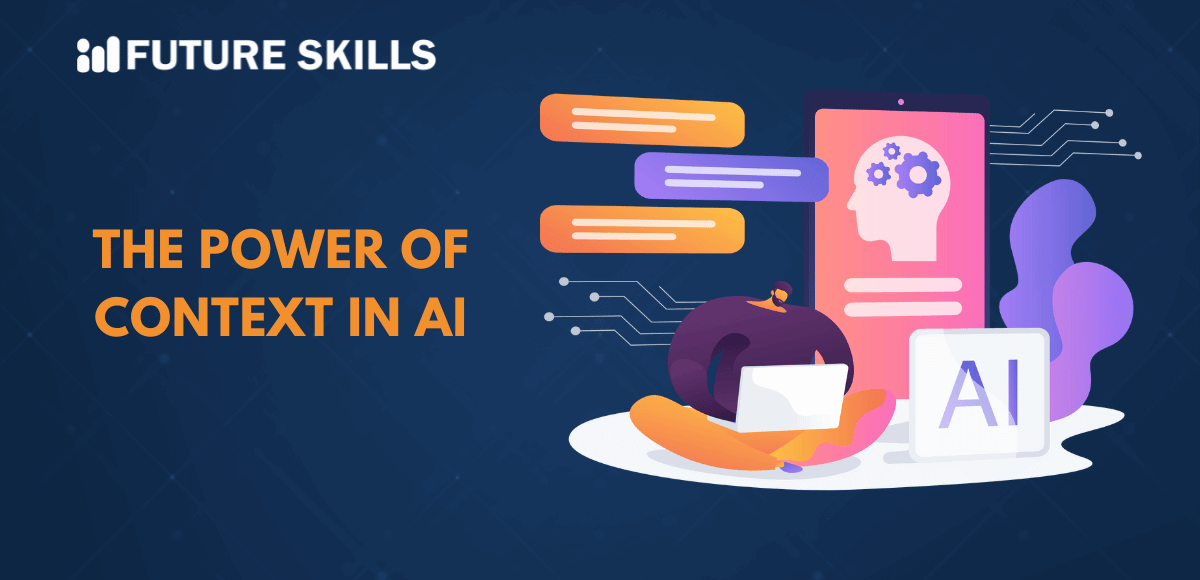In recent times, low-rank adaptation (LoRA) is undoubtedly transforming how developers fine-tune large language models. Instead of retraining hundreds of thousands of parameters, LoRA basically freezes the base model and updates only small and low-rank adapter layers. Thus, it not only cuts down the GPU costs but also preserves accuracy. This certainly makes LoRA one of the most practical as well as scalable fine-tuning methods for diverse stakeholders like businesses and researchers.
Low-rank adaptation (LORA) is based on the concept that major model changes can be represented with fewer parameters. As a result, it makes the adaptation process highly efficient in nature. Let us explore what is low-rank adaptation in LoRA. And thus uncover the subject in detail.
What is low-rank adaptation in LoRA?
Low-Rank Adaptation (LoRA) is a parameter-efficient fine-tuning technique for LLMs. It adopts a unique fine-tuning approach by freezing the base weights and inserting small and trainable low-rank matrices, which are called adapters.
Adapters are inserted inside key layers of the transformer architecture, and they are capable of capturing task-specific knowledge. Moreover, they do so while making sure that the original model remains untouched. The term low rank is used in LoRA since it is able to decompose the weight updates into two smaller matrices of much lower rank. A low-rank adaptation LoRA example involves fine-tuning an LLM for grading papers.
How LoRA works?
Now that you know the answer to the question – What is low rank adaptation in LoRA? It is time to understand its underlying mechanism. In order to understand how LoRA works, you need to have clarity into the following steps:
Step 1
In the first step, the base model is frozen. Thus, the pretrained LLM does not change, and the preservation of the general knowledge is in place. This step prevents the issue relating to catastrophic forgetting.
Step 2
In the second step, the insertion of low-key adapters takes place. More specifically, LoRA adds two lightweight matrices that are close to the weight updates. The number of trainable parameters significantly reduces as these matrices are much smaller compared to the full weight dimensions.
Step 3
While talking about low-rank adaptation (LoRA) techniques, the next step involves training only the parameters. During the fine-tuning stage, the updating of only LoRA adapters takes place. It implies that the training process is much faster. Moreover, it utilizes less GPU memory. Thus, low rank adaptation LoRA in Fine Tuning generates smaller model checkpoints.
Step 4
Although this step is optional, you need to be aware of it. It involves the merging of the LoRA adapters back into the base weights after training. You need to take this step for efficient inference. Otherwise, LoRA adapters can be kept separate so that they will allow multi-task switching across diverse adapters.
The low-rank adaptation (LoRA) techniques work for diverse reasons. Some of the main reasons are mathematical efficiency and scalability. Furthermore, it serves as a highly flexible approach that does not require retraining of the base model.
Join Mastering Generative AI with LLMs Course to understand how language models work and their capabilities to solve real-world problems.
LoRA Variants
Since the emergence of low-rank adaptation (LoRA), a number of powerful variants that make fine-tuning of LLM easier have come into being. Some of the major variants that you need to be aware of are presented below:
-
QLoRA
QLoRA is a highly efficient fine-tuning method. It is capable of achieving high performance as compared to full fine-tuning. Its main feature is that it significantly reduces memory usage along with computational resources.
-
LoRA +
It is a fine-tuning technique that assigns diverse learning rates to the two adapter matrices. Thus, it improves their convergence as well as stability. The simple tweak has the potential to improve the overall performance in wide networks while reducing the training time.
-
Emerging variants
At present, a number of new variants of LoRA are emerging that you need to be aware of. For instance, Dynamic-rank LoRA is a variant involving algorithms that can automatically adjust rank during training for balancing performance as well as efficiency. The variation of low-rank adaptation Lora in Fine Tuning shows there is immense potential in the technique for strengthening LLMs.
Build ChatGPT skills and take the first step to becoming superhuman with our free ChatGPT and AI fundamental course
Benefits of LoRA
Within a short period of time, Low-Rank Adaptation (LoRA) has become one of the most widely adopted methods when it comes to fine-tuning LLMs. A common low-rank adaptation LoRA example involves fine-tuning a model like Falcon on custom text. Some of the key benefits of LoRA include:
-
High Cost Savings
LoRA can decrease the total number of trainable parameters by orders of magnitude. You need to train only small, low-rank matrices instead of updating billions of weights. This approach automatically lowers cloud costs while making advanced fine-tuning possible even for established businesses as well as startups.
-
Efficient training process
As you only need to train the LoRA adapters, the training is faster and more efficient in nature. This procedure certainly speeds up the fine-tuning process. This is possible since it reduces both the development time and the energy use.
-
Reduced GPU Memory Requirement
Since LoRA updates only a tiny fraction of the parameters, the models can be fine-tuned on a single cloud GPU. Thus, there is no requirement for any large-scale clusters. In fact, variants like QLoRA make it possible to fine-tune over 65 billion-parameter models on commodity hardware.
Performance Tradeoffs
It is true that LoRA offers a considerable reduction in the number of trainable parameters. However, it is essential to remember that there exists a tradeoff as well.
Accuracy vs Efficiency
LoRA offers top-quality fine-tuning performance on common NLP tasks such as summarization and classification. However, when it comes to highly complex tasks, LoRA may underperform in case the low-rank adapters are unable to capture all the required representations.
Limited Capacity for Large Shifts
LoRA can showcase excellent performance when fine-tuning within related domains. However, in the case of tasks that need major representational changes, full or partial fine-tuning may still be necessary.
Information loss
During matrix decomposition, information loss may take place, which is a serious issue in the case of LoRA. As it reduces the full-weight or complete matrix into smaller components, there is a high chance that some details may get lost in the process.
Final Words
Presently, Low-Rank Adaptation (LoRA) has certainly been redefining how large language models are fine-tuned. LoRA focuses on freezing the base model as well as updating only lightweight or low-rank adapters. Moreover, it ensures the performance of LLMs without affecting or sacrificing the accuracy.
Some of the major benefits of LoRA include high cost savings, an efficient training process, and reduced GPU memory requirements. The variants of LoRA, such as QLoRA and LoRA+, undoubtedly extend the benefits of the fine-tuning technique further. However, it is essential to take into consideration the associated tradeoffs as well. Some of the main tradeoffs are accuracy vs efficiency, low capacity for large shifts, and information loss. It is essential to take into consideration the benefits and tradeoffs to get a holistic insight into Low-Rank Adaptation (LoRA).







